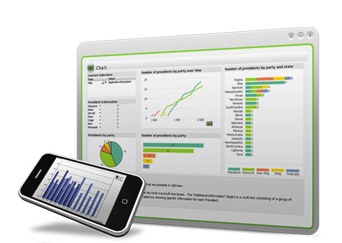
More than a decade ago, business intelligence (BI) was lauded as the holy grail to help companies make sense of the growing deluge of data housed on employee PCs and corporate data centres.
Despite the promises, many BI projects failed because companies often faced difficulties in integrating disparate islands of data. BI systems were also built to provide answers to predefined queries, rather than help companies glean useful insights into their business.
Today, BI projects still flop for the same reasons. According to Gartner, less than 30 per cent of BI initiatives will align analytic metrics with an organisation’s corporate strategy by 2014.
“Organisations often develop and deploy hindsight-oriented reports and/or query applications focusing on metrics that users may find interesting, but they don’t represent the operational or strategic controls used to facilitate business performance,” the analyst company said earlier in January this year.
An emerging area known as business discovery aims to bridge this disconnect between BI and business goals by allowing business users to explore information across various dimensions and data sources.
A business director, for instance, can gain real-time insights into sales performance and customer service levels by browsing aggregated data from his company’s sales, retail, purchasing, accounting and contact centre systems.
“Business discovery takes you down the path of exploring data,” said Donald Farmer, vice president of product management at QlikView, a provider of business discovery tools.
“Every time you ask a question, you get an answer which might also raise other questions – this is important but I can’t give that requirement to IT,” he added.
In a typical BI implementation, an executive will define what he wants to know along with the data sources for a designated BI team in an IT department. “I would need to tell IT what I didn’t know way in advance,” Farmer quipped.
Terry Smagh, vice president of sales at QlikView in Southeast and North Asia, noted that traditional BI initiatives tend to adopt a top-down approach, where models are constructed out of existing business operations and performance indicators.
That means business users would not be able to discover insights that fall outside those models. “We don’t construct a model that restricts you because business changes so quickly,” Farmer added.
According to Gartner, traditional BI’s top-down approach lacks agility in meeting business goals. It recommends a hybrid delivery model for economies of scale, more autonomy and faster turnaround times.
“The traditional BI vendors still have a part to play,” Smagh said. He recounted the experience of a company that still retained its SAP BusinessObjects BI platform for its weekly reports, while using QlikView for real-time insights into their business.
So will business discovery tools overshadow traditional BI one day?
Farmer believes traditional BI systems will become more isolated and used only for business reporting. “But when users have questions, they’ll want something that allows them to explore.”
Three tips for a successful BI project
To ensure your BI initiative does not end up as a white elephant, consider these pointers before diving in:
It’s all about the data
No matter how brilliant your BI system is, inconsistent, unclean and missing data are the chief bugbears of any BI project. Ensure your data warehouse does not become a messy data dump. Devise a strategy to organise and integrate your data across the enterprise. This forms the bulk of the work in any BI implementation effort.
Start from the ground-up
This might sound like a no brainer, but some organisations limit the use of BI tools to only top executives. Give your line managers BI tools to give them greater ownership over the organisation’s performance. You’ll never know what your managers can dig out from all that data. Mobile BI tools from vendors like QlikView also help to speed up decision making through collaborative features.
It’s not about the technology
Technology is just the means to an end. While you can slice and dice all your data on sleek looking dashboards, your managers still require deep analytical skills to take full advantage of BI. In a survey by Computing, a U.K-based IT publication, only 14 per cent of respondents said their organisations were committed to acquiring the analytical skills required to make sense of their data.






Our research data mostly backs up the positions and opinions in this article. However, I do think it downplays the role of managed reporting (traditional BI as it’s called here), because I think it is here to stay. Our research data does show that visual data discovery (business discovery as Qlikview calls it) is becoming increasingly important and more widely used. But, it’s important to note that it is used to complement existing BI technologies, not replace them. From our latest survey on agile BI, 164 companies out of 165 were using good old fashioned managed reporting. However, 84% of those companies also either used dashboards or visual data discovery too. And ultimately, organizations that used a combination of management reporting, dashboards and visual data discovery were the most likely to get the right information to the right people at the right time. Which is, after all, the whole point of BI….There are more details in my blog posting here for anyone that wants to see the numbers in more detail: http://blogs.aberdeen.com/business-intelligence/managed-reporting-no-no-hes-not-dead-hes-hes-restin/
Thanks for this insightful article. To this list, ”
No matter how brilliant your BI system is, inconsistent, unclean and missing data are the chief bugbears of any BI project.” I would add inconsistent, faulty, and missing business rules and calculations. Oftentimes legacy systems and departmental databases (e.g. “spreadsheets”) store the results of business logic and calculations, but not the inputs or the algorithms.